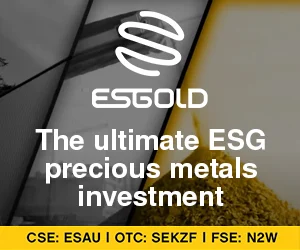According to a recent report by Allied Market Research, the global solar cell and module market was valued at $166.6 billion in 2023 and is projected to reach $373.6 billion by 2033, growing at a compound annual growth rate (CAGR) of 8.3% from 2024 to 2033. This remarkable growth underscores the pivotal role of solar technology in the renewable energy landscape, driven by a global shift towards clean and sustainable power sources.
Understanding Solar Cells and Modules
Solar cells are the heart of solar technology, converting sunlight directly into electricity through the photovoltaic effect. These cells are assembled into solar modules, which are deployed across various applications, including residential, commercial, and utility-scale solar power systems. The increasing awareness of environmental issues, coupled with government incentives and declining costs of solar technology, has significantly boosted the adoption of solar solutions worldwide.
Technological Advancements
The market’s growth is largely fueled by technological advancements in solar materials. Innovations in monocrystalline, polycrystalline, and thin-film technologies have not only improved efficiency but also reduced production costs. For instance, monocrystalline solar cells are known for their high efficiency rates, making them a preferred choice for many installations. Additionally, the development of bifacial modules and improvements in module design and durability have extended product lifespans and optimized performance, even in challenging environmental conditions.
Regional Dynamics
The solar cell and module market exhibits strong regional dynamics, with the Asia-Pacific region leading in both production and installation. Countries like China, India, and Japan are major contributors, driven by government policies promoting renewable energy and large-scale solar projects. China, in particular, dominates the global market as both the largest producer and consumer, benefiting from low manufacturing costs and robust domestic demand. India is rapidly expanding its solar capacity through initiatives like the National Solar Mission, while Japan continues to invest in solar as part of its post-nuclear energy strategy.
North America and Europe
In North America and Europe, the market is propelled by environmental regulations, financial incentives, and a strong push for clean energy adoption. The United States is a significant player, with increasing residential and utility-scale installations supported by federal tax credits and state-level policies. European countries such as Germany, Spain, and the Netherlands are also investing heavily in solar energy to meet climate goals and reduce dependence on fossil fuels.
Emerging Markets
Regions like Latin America, the Middle East, and Africa (LAMEA) are showing promising growth, particularly in areas with high solar irradiance and expanding electrification needs. International funding and infrastructure development are further supporting this growth, making solar energy a viable option for many developing nations.
Market Challenges
Despite the promising outlook, the solar cell and module market faces several challenges. Fluctuations in raw material prices, particularly for silicon and silver, can impact production costs and pricing strategies. Trade barriers and tariff regulations between major manufacturing and importing countries may also affect global supply chains. Moreover, the intermittent nature of solar energy generation and the need for efficient energy storage systems remain critical issues that need to be addressed to ensure a consistent and reliable power supply from solar technologies.
Market Segmentation
The solar cell and module market is segmented based on technology, product type, connectivity, end user, and region:
Technology: Monocrystalline, polycrystalline, and thin-film, with monocrystalline leading due to higher efficiency rates.
Product Type: Solar cells and solar modules.
Connectivity: On-grid and off-grid systems.
End User: Residential, commercial, and utility-scale sectors, with utility-scale projects contributing the largest share.
Region: North America, Europe, Asia-Pacific, and LAMEA.
Key Players and Innovations
Key patent holders in the solar cell and module market include a mix of manufacturers, research institutions, universities, and companies from related industries. Leading firms such as ENI S.p.A., SunPower Corporation, and Sharp Corporation possess extensive patent portfolios covering innovations in solar cell design, materials, manufacturing processes, and applications. Research institutions and universities also play a crucial role by contributing patents focused on cutting-edge R&D and emerging applications in the solar energy sector.
Conclusion
The solar cell and module market is on a trajectory of significant growth, driven by technological advancements, supportive government policies, and increasing environmental awareness. As the world continues to transition towards renewable energy, solar technology is poised to play a crucial role in meeting global energy demands sustainably. With ongoing innovations and expanding market opportunities, the future of solar energy looks exceptionally bright.
For more detailed insights, you can download the full report here.




